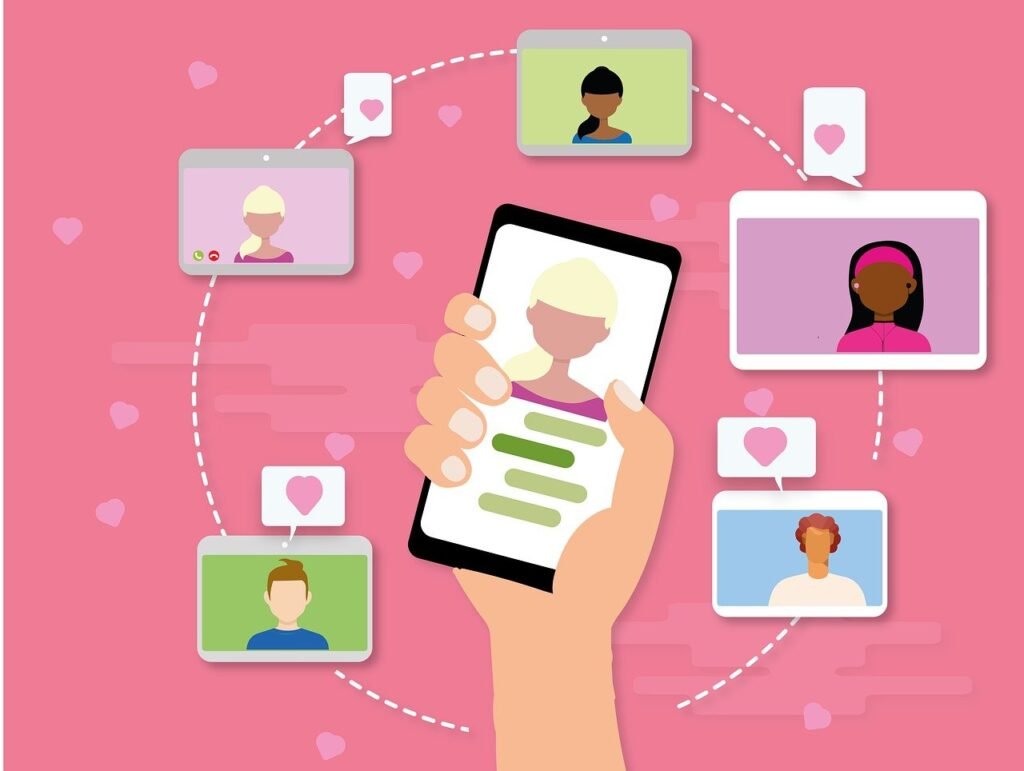- 1. Why is a Multi-Channel Strategy Critical for Retail Success?
- 2. How Does Multi-Channel Marketing Affect Customer Retention?
- 3. What is the Lifetime Value of Multi-Channel Shoppers?
- 4. Do Consumers Prefer Shopping Through Multiple Channels?
- 5. How Does a Strong Multi-Channel Strategy Impact Customer Engagement?
- 6. How Many Marketing Channels Do Companies Typically Use?
- 7. What Do Customers Expect from Multi-Channel Interactions?
- 8. How Does Multi-Channel Marketing Improve Customer Satisfaction?
- 9. What is the Effect of Multi-Channel Campaigns on Purchase Rates?
- 10. How Many Channels Do Marketers Use to Reach Their Audience?
- 11. How Does Multi-Channel Marketing Improve Customer Experience?
- 12. How Does Multi-Channel Marketing Affect Annual Revenue?
- 13. How Does Multi-Channel Marketing Impact Conversion Rates?
- 14. How Do Customers Shop Across Multiple Devices?
- 15. How Does Multi-Channel Marketing Increase Engagement?
- 16. How Does Multi-Channel Marketing Affect ROI?
- 17. How Does Multi-Channel Marketing Improve Brand Awareness?
- 18. How Much More Do Multi-Channel Customers Spend Compared to Single-Channel Customers?
- 19. What Are Marketers' Plans for Multi-Channel Marketing Investment in 2024?
- 20. How Important is Multi-Channel Marketing to Marketers' Overall Strategy?
- 21. How Does a Strong Multi-Channel Strategy Affect Annual Revenue Growth?
- 22. What Do Consumers Expect from Multi-Channel Customer Support?
- 23. How Do Multi-Channel Campaigns Affect Retention Rates?
- 24. What Are the Biggest Challenges in Integrating Multiple Channels?
- 25. How Does Multi-Channel Marketing Affect Customer Acquisition Costs?
- 26. How Does Multi-Channel Marketing Improve Customer Loyalty?
- 27. How Does Multi-Channel Marketing Enhance Customer Insights?
- 28. How Do Customers Respond to a Cohesive Multi-Channel Experience?
- 29. How Does Multi-Channel Marketing Affect the Efficiency of Marketing Spend?
- 30. How Does Multi-Channel Marketing Impact Overall Sales?
- We got all the latest Marketing Stats here:
In today’s digital world, customers interact with brands across various channels, from social media and email to in-store visits and mobile apps. Multi-channel marketing has become a critical strategy for businesses aiming to provide a seamless and cohesive customer experience. This approach not only enhances customer engagement but also drives sales and loyalty. As we head into 2024, understanding the importance of multi-channel marketing and the statistics that support its efficacy can help businesses refine their strategies for better results. In this article, we’ll dive into the key statistics that highlight the value of multi-channel marketing, offering insights and actionable takeaways for your business.
1. Why is a Multi-Channel Strategy Critical for Retail Success?

A multi-channel strategy is essential for retail success because it aligns with how customers shop today. 87% of retailers agree that a multi-channel strategy is critical to their success. This high percentage reflects the necessity of meeting customers where they are, whether it’s online, in-store, or on their mobile devices.
By implementing a multi-channel approach, retailers can provide a consistent and integrated shopping experience across various touchpoints.
This strategy not only enhances customer satisfaction but also drives sales by making it easier for customers to engage with the brand in their preferred way. Retailers who fail to adopt a multi-channel strategy risk losing out to competitors who can offer a more seamless shopping experience.
2. How Does Multi-Channel Marketing Affect Customer Retention?
Multi-channel marketing significantly boosts customer retention rates. Companies using multi-channel marketing see an average customer retention rate of 89%. This impressive figure underscores the effectiveness of engaging customers through multiple channels.
When customers can interact with a brand through their preferred channels, they are more likely to remain loyal. Multi-channel marketing ensures that customers receive consistent messaging and a cohesive brand experience, which strengthens their connection to the brand.
By maintaining engagement across various channels, businesses can keep their customers coming back, ultimately enhancing long-term loyalty and profitability.
3. What is the Lifetime Value of Multi-Channel Shoppers?
Multi-channel shoppers have a higher lifetime value compared to single-channel shoppers. Multi-channel shoppers have a 30% higher lifetime value than those who shop using only one channel. This statistic highlights the financial benefits of multi-channel marketing.
By engaging customers across multiple touchpoints, businesses can increase the frequency and value of their purchases.
Multi-channel shoppers tend to spend more because they have more opportunities to interact with the brand, whether it’s through targeted emails, personalized social media ads, or convenient mobile shopping options. This increased engagement translates into higher lifetime value, making multi-channel customers more valuable to the business.
4. Do Consumers Prefer Shopping Through Multiple Channels?
Yes, consumers prefer having multiple shopping options. 73% of consumers prefer shopping through multiple channels. This preference indicates that today’s shoppers want flexibility and convenience in their purchasing journey.
Consumers are no longer confined to a single shopping method. They might start their journey by browsing products online, then visit a physical store to see the items in person, and finally make a purchase via a mobile app.
By providing a seamless experience across all these channels, businesses can cater to the diverse preferences of their customers, enhancing satisfaction and encouraging repeat purchases.
5. How Does a Strong Multi-Channel Strategy Impact Customer Engagement?
A strong multi-channel strategy significantly boosts customer engagement. Businesses with strong multi-channel customer engagement retain 89% of their customers. This statistic emphasizes the importance of interacting with customers across various platforms.
When businesses engage with customers through multiple channels, they create more touchpoints and opportunities for interaction. This increased engagement helps build stronger relationships and keeps the brand top-of-mind for customers.
Whether it’s through personalized email campaigns, responsive social media interactions, or targeted ads, a robust multi-channel strategy ensures that customers feel connected to the brand, leading to higher retention rates.
6. How Many Marketing Channels Do Companies Typically Use?
Many companies are utilizing multiple marketing channels to reach their audience. 56% of companies use three or more marketing channels to reach their customers. This approach reflects the need to diversify marketing efforts to effectively engage with different customer segments.
Using multiple channels allows businesses to cast a wider net and increase their chances of reaching potential customers. Each channel offers unique advantages and can cater to different preferences and behaviors.
By leveraging a combination of email, social media, search engine marketing, and other channels, businesses can create a comprehensive and effective marketing strategy that maximizes their reach and impact.
7. What Do Customers Expect from Multi-Channel Interactions?
Customers today have high expectations for their interactions with brands. 90% of customers expect consistent interactions across channels. This expectation highlights the importance of providing a cohesive and seamless experience, regardless of the platform.
Consistency is key in building trust and loyalty. When customers receive the same quality of service and messaging across all channels, they are more likely to feel confident in the brand.
This consistency extends to all aspects of the customer experience, from the tone and style of communication to the availability of products and services. Meeting these expectations requires businesses to ensure that their multi-channel strategies are well-coordinated and integrated.
8. How Does Multi-Channel Marketing Improve Customer Satisfaction?
Multi-channel marketing has a positive impact on customer satisfaction. Brands using multi-channel marketing see a 23% increase in customer satisfaction. This increase demonstrates the value of providing a seamless and engaging experience across various touchpoints.
By offering multiple ways for customers to interact with the brand, businesses can cater to their preferences and needs more effectively. Whether customers prefer shopping online, engaging on social media, or visiting a physical store, a multi-channel approach ensures that they have a positive and consistent experience. This leads to higher satisfaction levels, which in turn drives loyalty and repeat business.
9. What is the Effect of Multi-Channel Campaigns on Purchase Rates?
Multi-channel campaigns can significantly boost purchase rates. Multi-channel campaigns can boost purchase rates by 37%. This statistic highlights the effectiveness of reaching customers through various channels to drive sales.
When businesses engage with customers across multiple touchpoints, they increase the likelihood of conversion. Each channel provides a different opportunity to capture the customer’s attention and influence their purchasing decision.
By creating integrated campaigns that leverage the strengths of each channel, businesses can maximize their impact and drive higher purchase rates.
10. How Many Channels Do Marketers Use to Reach Their Audience?

Marketers are increasingly using multiple channels to reach their target audience. 52% of marketers use three or four marketing channels to reach their target audience. This multi-channel approach reflects the need to diversify marketing efforts and maximize reach.
Using a variety of channels allows marketers to engage with customers in different ways and at different stages of their buying journey. Each channel offers unique opportunities to connect with the audience, from raising awareness through social media to driving conversions through email marketing. By leveraging multiple channels, marketers can create more comprehensive and effective campaigns that resonate with their audience.
11. How Does Multi-Channel Marketing Improve Customer Experience?
Multi-channel marketing significantly enhances the customer experience. 78% of businesses that implement a multi-channel strategy report improved customer experience. This improvement is due to the seamless and personalized interactions that multi-channel marketing enables.
When customers can interact with a brand through their preferred channels, they are more likely to have a positive experience. Multi-channel marketing allows businesses to deliver consistent messaging and support across various platforms, whether it’s through social media, email, in-store visits, or mobile apps.
This cohesive approach ensures that customers receive a smooth and engaging experience, increasing their satisfaction and loyalty.
12. How Does Multi-Channel Marketing Affect Annual Revenue?
Businesses that use multi-channel marketing strategies see significant improvements in their annual revenue. Companies using multiple channels for marketing achieve a 9.5% year-over-year increase in annual revenue. This growth underscores the financial benefits of reaching customers through multiple touchpoints.
Multi-channel marketing enables businesses to engage with a broader audience and create more opportunities for sales. By using various channels to interact with customers, businesses can increase their reach and influence purchasing decisions more effectively.
This approach not only drives immediate sales but also fosters long-term customer relationships, contributing to sustained revenue growth.
13. How Does Multi-Channel Marketing Impact Conversion Rates?
Multi-channel marketing strategies lead to higher conversion rates. Multi-channel marketing strategies lead to an average of 24% more conversions. This statistic highlights the effectiveness of engaging customers through multiple channels to drive sales.
By using a combination of channels to reach and interact with customers, businesses can create more touchpoints and opportunities for conversion. Each channel can play a unique role in the customer journey, from raising awareness to facilitating the final purchase.
This comprehensive approach ensures that customers receive consistent and compelling messages at every stage, increasing the likelihood of conversion.
14. How Do Customers Shop Across Multiple Devices?
Customers today frequently shop across multiple devices. 67% of customers start shopping on one device and continue on another. This behavior demonstrates the importance of providing a seamless experience across all digital platforms.
Customers might begin their shopping journey on a mobile device, continue browsing on a desktop, and complete their purchase on a tablet. To cater to this behavior, businesses need to ensure that their online presence is consistent and user-friendly across all devices.
This includes having responsive websites, synchronized shopping carts, and cohesive marketing messages. By accommodating multi-device shopping, businesses can enhance the customer experience and increase conversion rates.
15. How Does Multi-Channel Marketing Increase Engagement?
Multi-channel marketing significantly boosts customer engagement. Brands using multi-channel marketing see a 30% increase in engagement. This increase highlights the importance of interacting with customers through various platforms.
When businesses engage with customers through multiple channels, they create more opportunities for interaction and connection. Each channel offers a different way to engage with the audience, from social media posts and email newsletters to in-store events and mobile app notifications.
By leveraging a mix of channels, businesses can capture customers’ attention more effectively and maintain their interest over time.

16. How Does Multi-Channel Marketing Affect ROI?
Multi-channel marketing has a positive impact on return on investment (ROI). 70% of multi-channel marketers report a significant increase in ROI. This statistic underscores the financial benefits of reaching customers through various touchpoints.
By engaging with customers through multiple channels, businesses can increase the effectiveness of their marketing efforts. Each channel contributes to the overall success of the campaign, enhancing brand visibility, customer engagement, and conversion rates. This comprehensive approach ensures that marketing resources are used efficiently, leading to higher ROI.
17. How Does Multi-Channel Marketing Improve Brand Awareness?
Multi-channel marketing is highly effective in boosting brand awareness. 80% of marketers using multi-channel strategies say it improves brand awareness. This improvement is due to the increased visibility and reach that multi-channel marketing provides.
When businesses use multiple channels to promote their brand, they can reach a wider audience and reinforce their messaging across various platforms. This consistent presence helps to build brand recognition and familiarity among consumers.
By leveraging the strengths of each channel, businesses can create a cohesive brand image that resonates with their target audience, increasing overall brand awareness.
18. How Much More Do Multi-Channel Customers Spend Compared to Single-Channel Customers?
Multi-channel customers tend to spend significantly more than those who shop through only one channel. Multi-channel customers spend 3-4 times more than single-channel customers. This higher spending highlights the financial benefits of engaging customers through multiple touchpoints.
By providing a seamless and integrated shopping experience across various channels, businesses can encourage customers to make more frequent and higher-value purchases. Multi-channel customers are more likely to take advantage of promotions, loyalty programs, and personalized offers, leading to increased spending. This behavior not only boosts immediate sales but also enhances long-term customer value.
19. What Are Marketers’ Plans for Multi-Channel Marketing Investment in 2024?
Marketers are planning to increase their investment in multi-channel marketing in the coming year. 65% of marketers plan to increase their investment in multi-channel marketing in 2024. This planned increase reflects the growing recognition of the value of a multi-channel approach.
By investing more in multi-channel marketing, businesses can enhance their ability to reach and engage with customers through various platforms. This investment can include spending on advanced analytics tools, customer relationship management (CRM) systems, and integrated marketing platforms. These resources help businesses to optimize their multi-channel strategies, improving efficiency and effectiveness.
20. How Important is Multi-Channel Marketing to Marketers’ Overall Strategy?

Multi-channel marketing is considered very important to marketers’ overall strategy. 48% of marketers say multi-channel marketing is very important to their strategy. This importance underscores the necessity of a cohesive approach to customer engagement.
A multi-channel strategy allows businesses to reach customers where they are, providing a seamless and consistent experience across all touchpoints. This approach enhances customer satisfaction and loyalty, driving better business outcomes. By prioritizing multi-channel marketing, businesses can ensure that their marketing efforts are aligned with customer preferences and behaviors.
21. How Does a Strong Multi-Channel Strategy Affect Annual Revenue Growth?
A strong multi-channel strategy significantly impacts annual revenue growth. Companies with strong multi-channel strategies achieve a 13% greater annual revenue growth rate. This statistic underscores the financial benefits of implementing a cohesive and integrated approach to marketing.
By engaging customers through multiple channels, businesses can create more opportunities for sales and customer retention. Each channel provides a unique touchpoint that can influence purchasing decisions and build customer loyalty. This comprehensive approach not only drives immediate sales but also supports sustained revenue growth by fostering long-term customer relationships.
22. What Do Consumers Expect from Multi-Channel Customer Support?
Consumers have high expectations for multi-channel customer support. 64% of consumers expect to receive real-time assistance regardless of the channel they use. This expectation highlights the importance of providing consistent and responsive customer service across all platforms.
Customers today expect to have their questions answered and issues resolved quickly, whether they contact a brand through social media, email, or live chat. To meet these expectations, businesses need to ensure that their customer support is integrated and responsive across all channels. This approach not only enhances customer satisfaction but also builds trust and loyalty.
23. How Do Multi-Channel Campaigns Affect Retention Rates?
Multi-channel campaigns have a significant impact on customer retention rates. Multi-channel campaigns that include at least three channels have a 90% higher retention rate. This statistic demonstrates the effectiveness of engaging customers through multiple touchpoints to keep them coming back.
By interacting with customers across various channels, businesses can maintain a continuous and engaging dialogue. Each channel offers different opportunities to connect with customers, whether through personalized emails, targeted social media ads, or in-store experiences. This multi-channel approach ensures that customers feel valued and engaged, increasing their likelihood of remaining loyal to the brand.
24. What Are the Biggest Challenges in Integrating Multiple Channels?
Integrating multiple channels presents several challenges for marketers. 50% of marketers believe integrating multiple channels is their biggest challenge. This challenge underscores the complexity of creating a seamless and cohesive multi-channel strategy.
Effective integration requires sophisticated tools and processes to ensure that data and messaging are consistent across all channels. Marketers need to coordinate their efforts to provide a unified customer experience, which can be difficult when dealing with different platforms and technologies. Addressing these challenges is crucial for businesses to fully leverage the benefits of multi-channel marketing.
25. How Does Multi-Channel Marketing Affect Customer Acquisition Costs?
Multi-channel marketing can significantly reduce customer acquisition costs. Multi-channel marketing reduces the cost of customer acquisition by 50%. This reduction highlights the cost-efficiency of reaching customers through various touchpoints.
By engaging with customers across multiple channels, businesses can optimize their marketing spend and reduce waste. Each channel provides different opportunities to reach potential customers, allowing businesses to allocate their resources more effectively. This comprehensive approach not only reduces acquisition costs but also increases the overall efficiency of marketing efforts.
26. How Does Multi-Channel Marketing Improve Customer Loyalty?

Multi-channel marketing has a positive impact on customer loyalty. 82% of businesses see an increase in customer loyalty with a multi-channel approach. This increase demonstrates the value of providing a consistent and engaging experience across various touchpoints.
By interacting with customers through their preferred channels, businesses can build stronger relationships and foster loyalty. Multi-channel marketing allows businesses to deliver personalized and relevant messages that resonate with customers, encouraging them to remain loyal to the brand. This approach not only enhances customer satisfaction but also drives repeat business and long-term loyalty.
27. How Does Multi-Channel Marketing Enhance Customer Insights?
Multi-channel marketing provides businesses with better customer insights. 74% of businesses report better customer insights and analytics from multi-channel marketing. This improvement highlights the value of collecting and analyzing data from various touchpoints.
By leveraging data from multiple channels, businesses can gain a more comprehensive understanding of customer behavior and preferences. This holistic view allows marketers to create more targeted and effective campaigns. Enhanced customer insights also help businesses to identify trends and opportunities, driving continuous improvement in their marketing strategies.
28. How Do Customers Respond to a Cohesive Multi-Channel Experience?
Customers are more likely to buy from brands that offer a cohesive multi-channel experience. 61% of customers are more likely to buy from a brand with a cohesive multi-channel experience. This statistic underscores the importance of providing a seamless and integrated experience across all touchpoints.
When customers receive consistent messaging and support across various channels, they are more likely to trust and engage with the brand. A cohesive multi-channel experience ensures that customers can interact with the brand in their preferred way, enhancing their satisfaction and likelihood of making a purchase. This approach not only drives immediate sales but also builds long-term customer loyalty.
29. How Does Multi-Channel Marketing Affect the Efficiency of Marketing Spend?
Multi-channel marketing can increase the efficiency of marketing spend. Companies that utilize multi-channel marketing report a 30% increase in the efficiency of their marketing spend. This improvement highlights the cost-effectiveness of reaching customers through various touchpoints.
By leveraging multiple channels, businesses can optimize their marketing efforts and reduce waste. Each channel provides unique opportunities to engage with customers, allowing businesses to allocate their resources more effectively. This comprehensive approach ensures that marketing budgets are used efficiently, driving better results and higher ROI.
30. How Does Multi-Channel Marketing Impact Overall Sales?
Multi-channel marketing strategies can significantly boost overall sales. Multi-channel marketing strategies can lead to a 20% increase in overall sales. This increase demonstrates the effectiveness of reaching customers through various touchpoints to drive revenue growth.
By engaging with customers across multiple channels, businesses can create more opportunities for sales and conversions. Each channel provides a different way to influence purchasing decisions, from raising awareness to facilitating the final purchase. This comprehensive approach ensures that customers receive consistent and compelling messages at every stage of their buying journey, leading to higher overall sales.
Multi-channel marketing is essential for businesses aiming to thrive in the competitive landscape of 2024. The statistics presented in this article highlight the numerous benefits of engaging customers through multiple touchpoints. By adopting a multi-channel approach, businesses can enhance customer satisfaction, boost engagement, and drive significant growth in sales and revenue. As we move forward, leveraging these insights will be crucial for creating effective and integrated marketing strategies that resonate with today’s consumers.
We got all the latest Marketing Stats here:
Read Next
- Local Citations and NAP Consistency for Hospitality SEO
- How to Optimize Google My Business for Travel Agencies
- Local SEO Best Practices for Hotels and Restaurants
- Blog Post Ideas to Boost Travel Website SEO
- How to Optimize Google My Business for Travel Agencies




















Comments are closed.